Excerpts from Jim Conrad's
Naturalist Newsletter
Entry dated February 6, 2024, issued from near Tequisquiapan; elevation about 1,900m, (6200 ft), ~N20.57°, ~W99.89°; Querétaro state, MÉXICO
SNAKE-COTTON
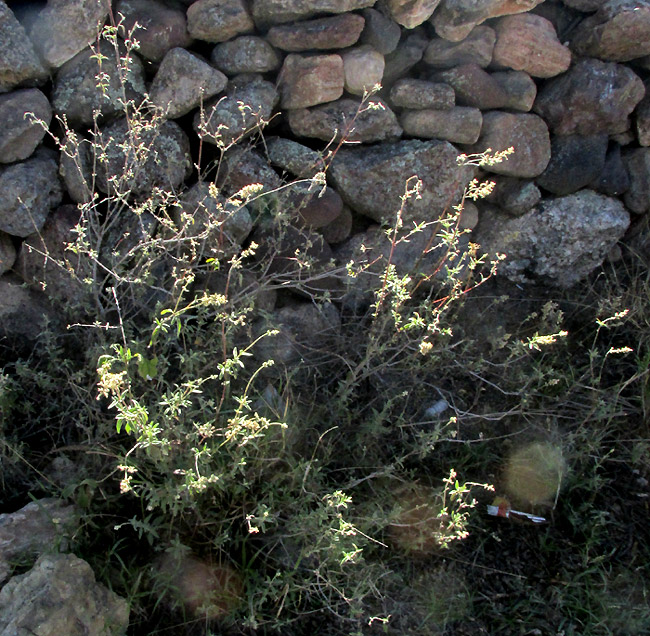
The above bushy herb about waist tall glowed in morning sunlight along with other weeds beside a stone wall. We're experiencing the usual dry season during an ongoing two-year-long period the North American Drought Monitor designates a D3 Extreme Drought, so most herbaceous plants are dried up, gray and crispy. Even our shrub has lost all its leaves except for a few at branch tips. Still, this species, having produced many flowering heads at branch tips, is clearly drought tolerant, and well poised to gain ground as the Earth trends toward desertification.
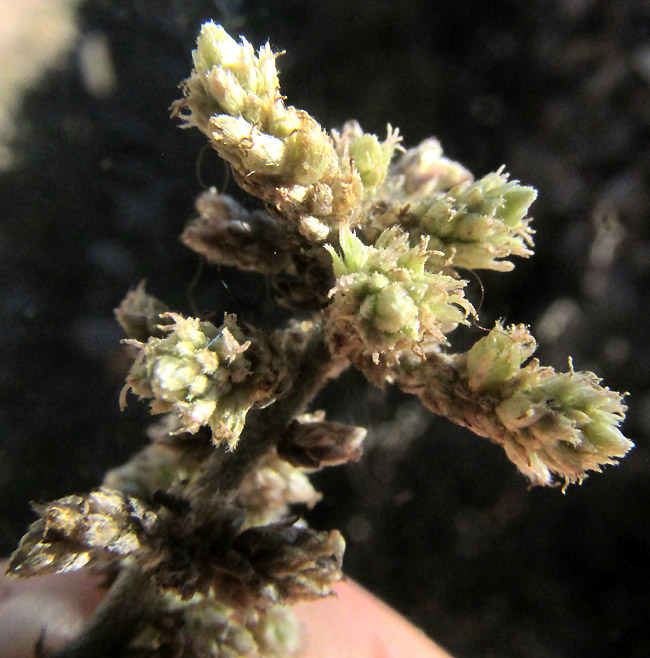
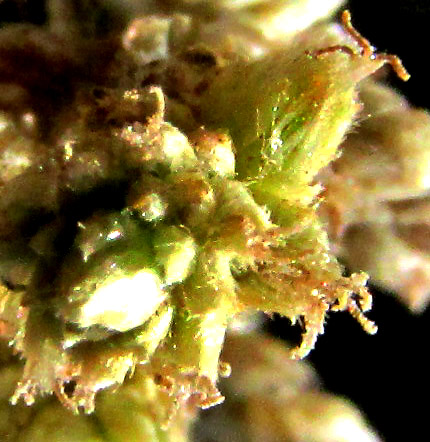
Above, inflorescences consists of branching spikes. Flowers densely cluster along the spikes, which often are separated from one another along stems. As seen at the right, especially in the top, right corner, flowers produce no corollas or calyxes, but instead develop green, five-lobed, bowl-like perianths covered with long, woolly hairs. Styles extend from some perianths, each bearing up to five recurved stigmas.
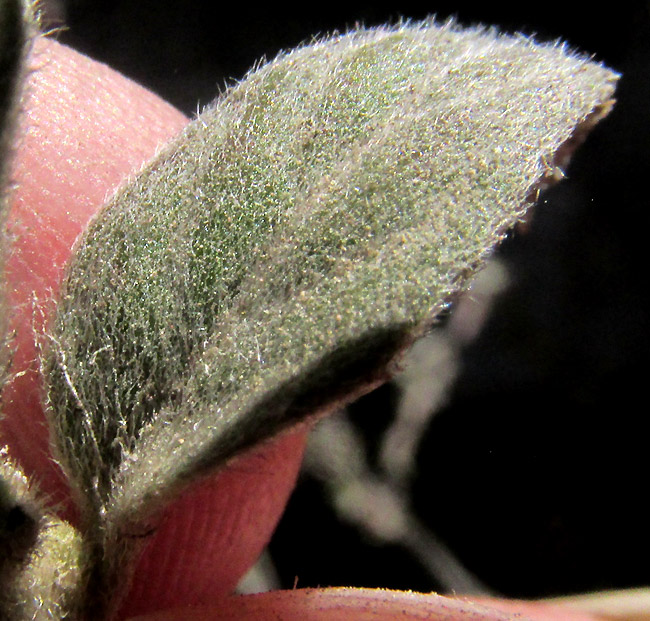
Young leaves are whitish with long, soft hairs.
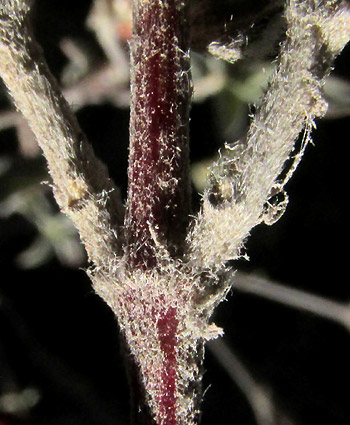
Younger stems also are white-hairy, but the hairs wear off the older ones. Leaves also become less white with age.
As seen below, our herbaceous perennial was almost woody at its base, and much branched. Later I'd see that most photos of this species are clearly herbaceous, with little indications of such tree-like stem and branching. However, features of inflorescences and flowers seen above leave little doubt about the species.

With stems bearing pairs of simple leaves opposite one another, as shown above on young stem tips, and short spikes crowded with a jumble of small flowers having bowl-shaped, five-lobed perianths enveloping plump ovaries, at least in terms of inflorescence and flower structure, our plant is strongly reminiscent of species such as the common weed Lambsquarters. That species is a member of the Amaranth Family, the Amaranthaceae, and the Goosefoot subfamily, the Chenopodioideae, so that's where I looked for this species.
With the flowers arranged in short but recognizable spikes mostly well separated from one another, and because perianths unite to form bowl-like structures enveloping the ovary, and the perianth and other parts were white-hairy, we're led to the exclusively New World genus Froelichia. The 21 or so species of that genus often are referred to as snake-cottons or cottonweeds. The cottony hairs have caught the name-givers' attention.
No treatment of the genus Froelichia is available for our part of upland central Mexico. However, there's the 2007 work by Ross McCauley and Harvey Ballard entitled "Systematics of North American Froelichia (Amaranthaceae subfam. Gomphrenoideae) II: Phylogeny and biogeographic speciation patterns inferred from nrITS sequence data." In that study, eight species are found to occur in the US and Mexico, and of those eight the study's distribution maps register only one species occurring in Querétaro state, and that's FROELICHIA INTERRUPTA var. INTERRUPTA, with no English name. Pictures labeled with that name agree in appearance with our plant, except for our bush's extensive branching and almost-woody stems.
Froelichia interrupta var. interrupta is endemic just to Mexico's uplands, particularly dry grasslands and rocky pine forests, from southern Chihuahua in the north to Oaxaca in the south.
I find no documentation of human uses of this species, though we can't forget the obvious ones of its contributing oxygen and organic matter to the ecosystem, and retarding erosion.